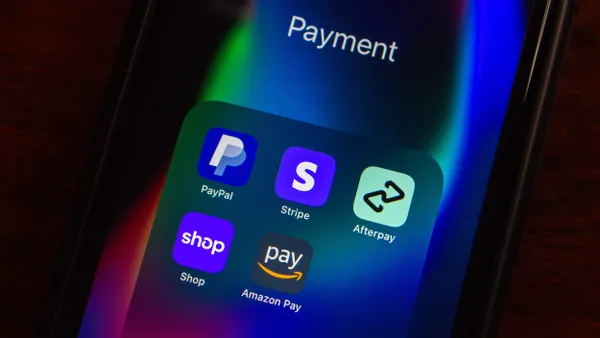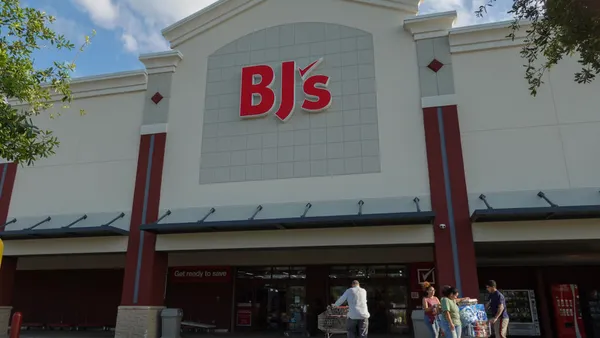2018 was the year of mobile shopping. Consumer willingness to shop via smartphones took off, with over 45% of purchases being completed on devices. Its popularity further revealed itself in the last months of the year with shoppers spending $15.3 billion via mobile in the first 25 days of November — a 56% increase over 2017. Additionally, mobile sales drove $2.2 billion in sales on Cyber Monday, according to Adobe Analytics.
The flurry of activity comes at a time when retailers are fully realizing the channel's impact. What was once viewed as a marketing platform is now understood to be an integral part of a larger omnichannel experience. VP Senior Credit Officer at Moody's, Charlie O'Shea, summed things up in a November interview with Retail Dive when he said, "The brick and mortars are finally realizing — you know what? We have to be agnostic as to where we get the sale, we just want the sale."
The concept that ties all the top stories of 2018 together is that mobile continually gives us a window to the future of retail. It's a tangible point of innovation that is literally in our hands. Mobile technology is exciting because it reiterates that things are changing, that how we interact with stores is evolving and that we are living in the middle of that shift.
Here are the most-read mobile news stories of 2018:
-
Nike sells out of Facebook messenger sneaker drop in less than an hour
Nike didn't just do well with its foray into selling sneakers on Facebook Messenger — it smashed expectations. The retailer sold out of shoes on the platform in under an hour. Shoppers had to obtain a code of emojis from social influencers and then enter those emojis into Messenger's chatbot before they were able to access the shoes. A smartphone could then be utilized to examine the shoe through a superimposed image over a real environment. The experience combined elements of a gamified shopping experience, social media, AR and mobile to become an entirely new means of interacting with a product.
-
Amazon Go opens to the public
Amazon Go formally opened in Seattle this past January and swiftly moved to open locations in Chicago and San Francisco. Shoppers need an Amazon account, the Amazon Go app, and a smartphone to walk out with products and have their accounts charged. The public responded positively with repeat visits and by staying in-store an average of 27 minutes per trip.
The cashierless concept is quickly advancing from merely being a novelty to becoming a convenience store reality. This fall it was reported that Amazon is planning on opening up to 3,000 Go locations by 2021. In December the retailer opened its first small-format Go store with an eye on launching in a variety of spaces with a more compact footprint including offices and hospitals.
-
Instagram drives jewelry sales
When shoppers of discerning taste think of jewelry they may first cite luxury brands like Tiffany, Cartier or Harry Winston — heritage brands with high price points. Yet, the store that had the most impact over the accessories market this year wasn't a store at all, but a social media platform.
Retail and fashion technology firm Edited calls it the Instagram effect. In an August report the company revealed that earrings, in particular, are pushing the entire category due to the popularity of selfies. While it might be easy to relegate Instagram's influence as a fad, it's important to note that accessories account for 18% of the apparel market. Additionally, Instagram has tremendous leverage over apparel retail overall, with nearly 75% of people reporting they have made fashion and beauty purchases based on something they saw on the platform.
-
Social media influences Gen Z
People love to read about — and the media loves to write about — Gen Z. In a study by Yes Lifecycle Marketing that surprises no one, 80% of Gen Zers are influenced by social media, specifically Instagram, Snapchat and YouTube when it comes to purchasing decisions.
What makes this group so fascinating? It might be that this generation doesn't know a world without the internet, and thus has a remarkably different approach to most industries, including how it interacts with retail. It's also the group that has harnessed the power of social media's influence — where peers can get paid to rep products and partner with major companies who want to expand a brand's influence.
This generation is examined because they represent everything that is coming to fruition — where mobile, e-commerce and online clout are combined in a way that translates to real-world revenues. Their combined purchasing power is pushing companies to examine their stance on political issues and social responsibility.
-
Walmart drops mobile Scan & Go checkout
Scan & Go technology sounded so promising. Walmart customers could use an app on their smartphone or an in-store scanner to pay for items while they shopped in an effort to skip the checkout line. It was a great idea, and the mass merchant made a bold decision to expand the program to over 100 stores this year. Except no one wanted to use it.
Walmart made a smart move by pivoting and quickly dropping the technology. But, the event acts as a concrete example of the distance between expectations and the reality of retail mobile experiences. On paper it should have worked — shorter lines! Cool tech! Consumers can use their own phones! However, too much friction remained in the process, thus pushing consumers away instead of bringing them closer to a smoother, branded experience. Walmart learned from the experience and adapted by giving store associates mobile technology to aid customers throughout their stores














